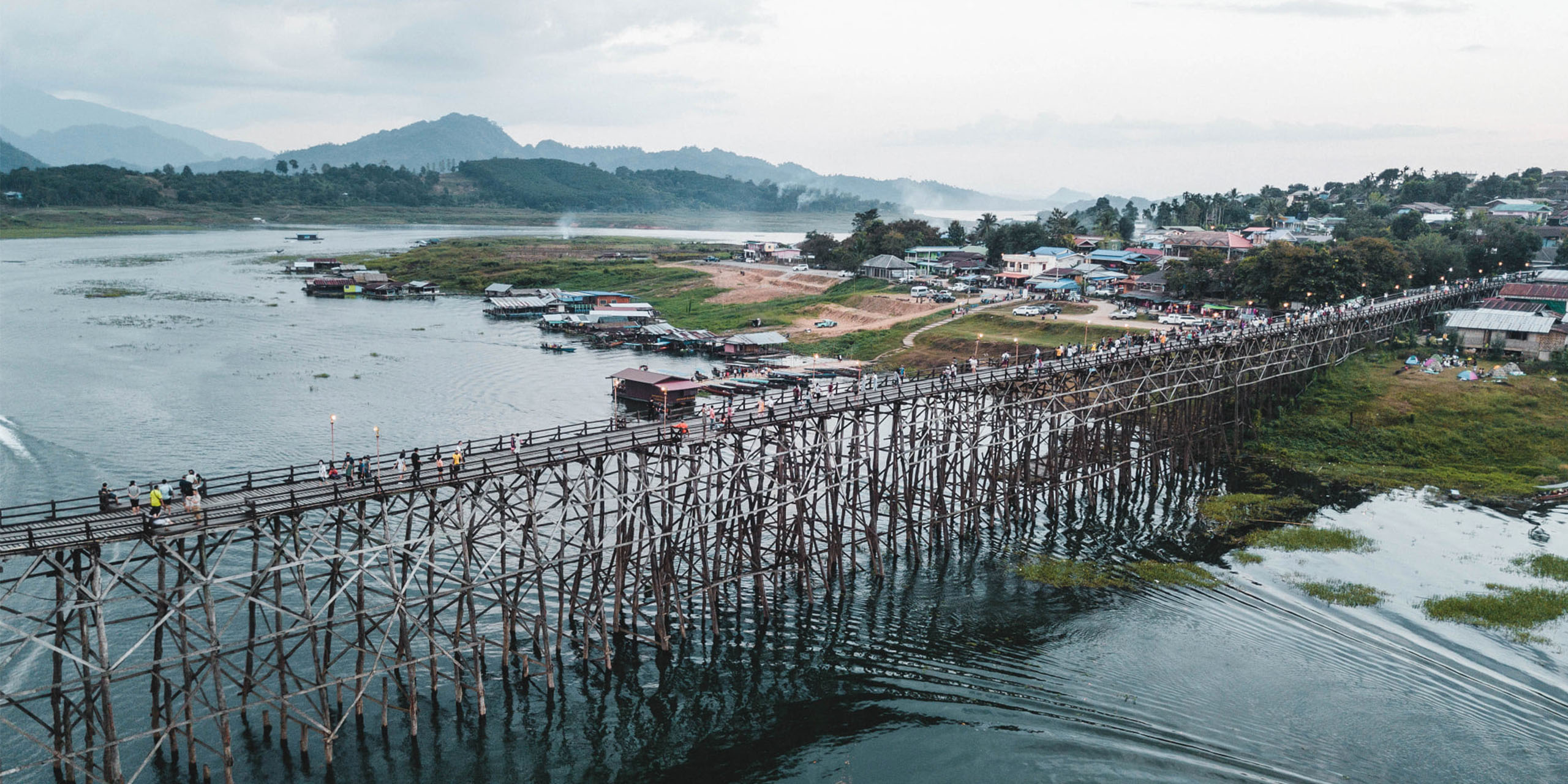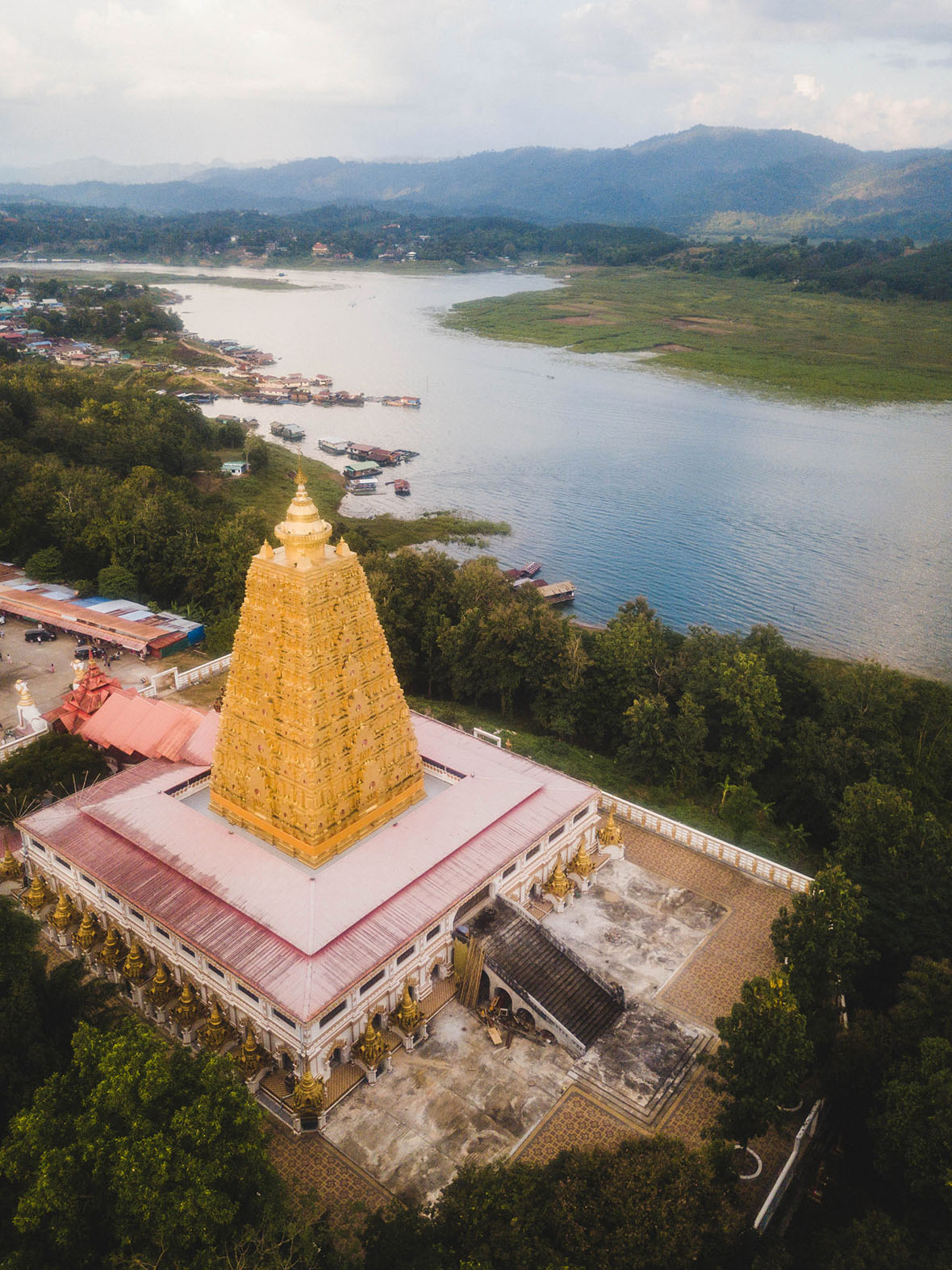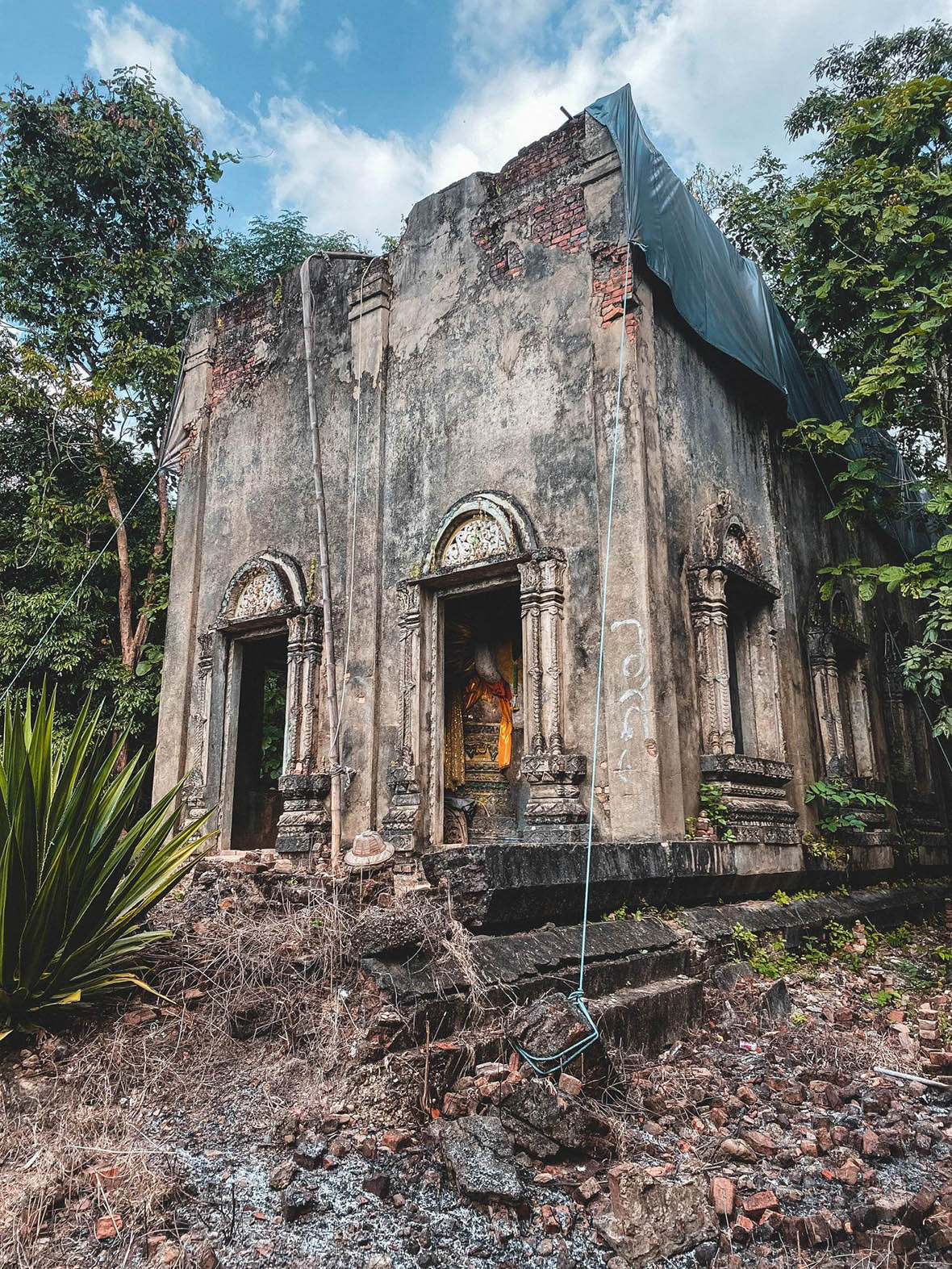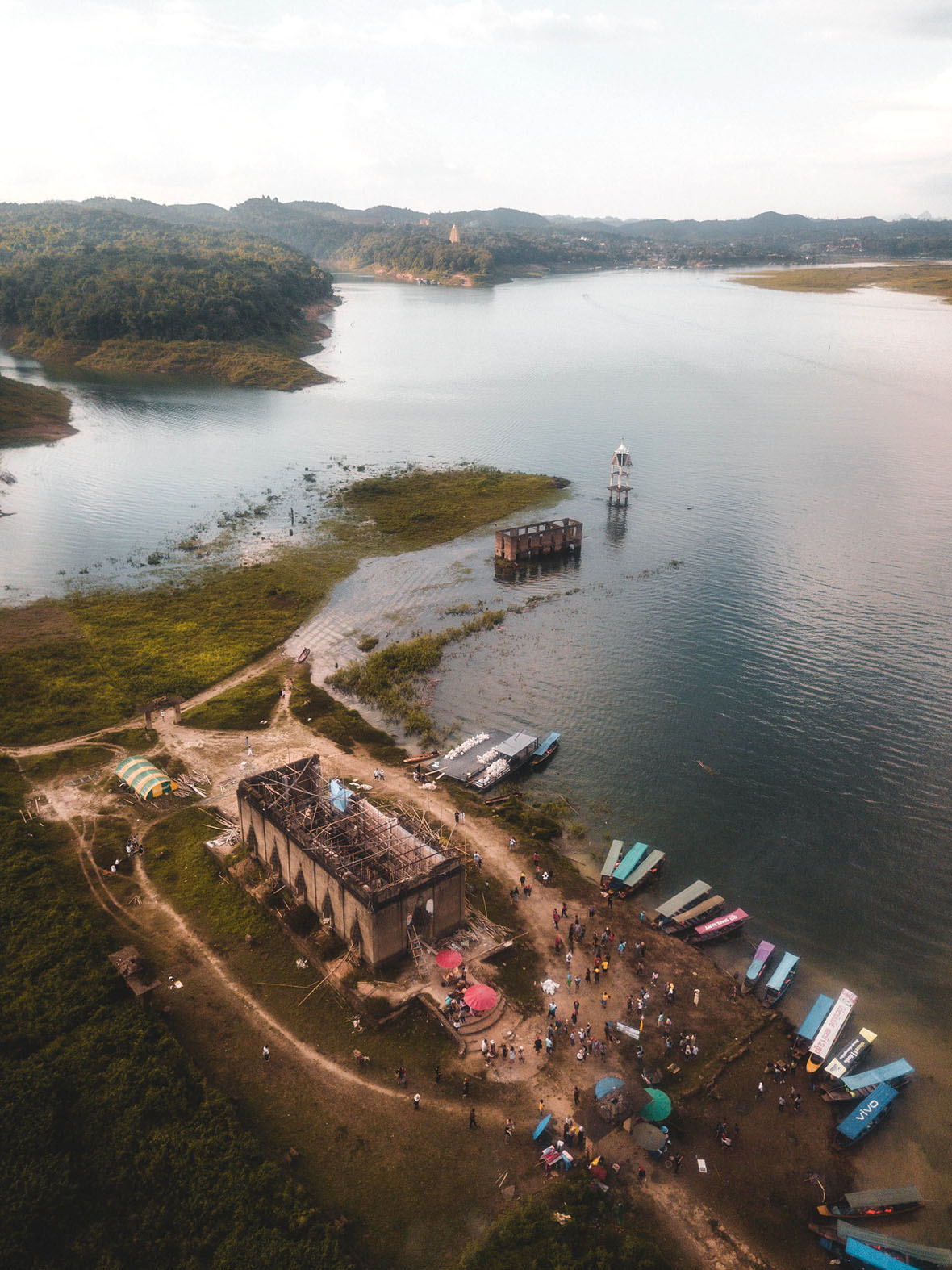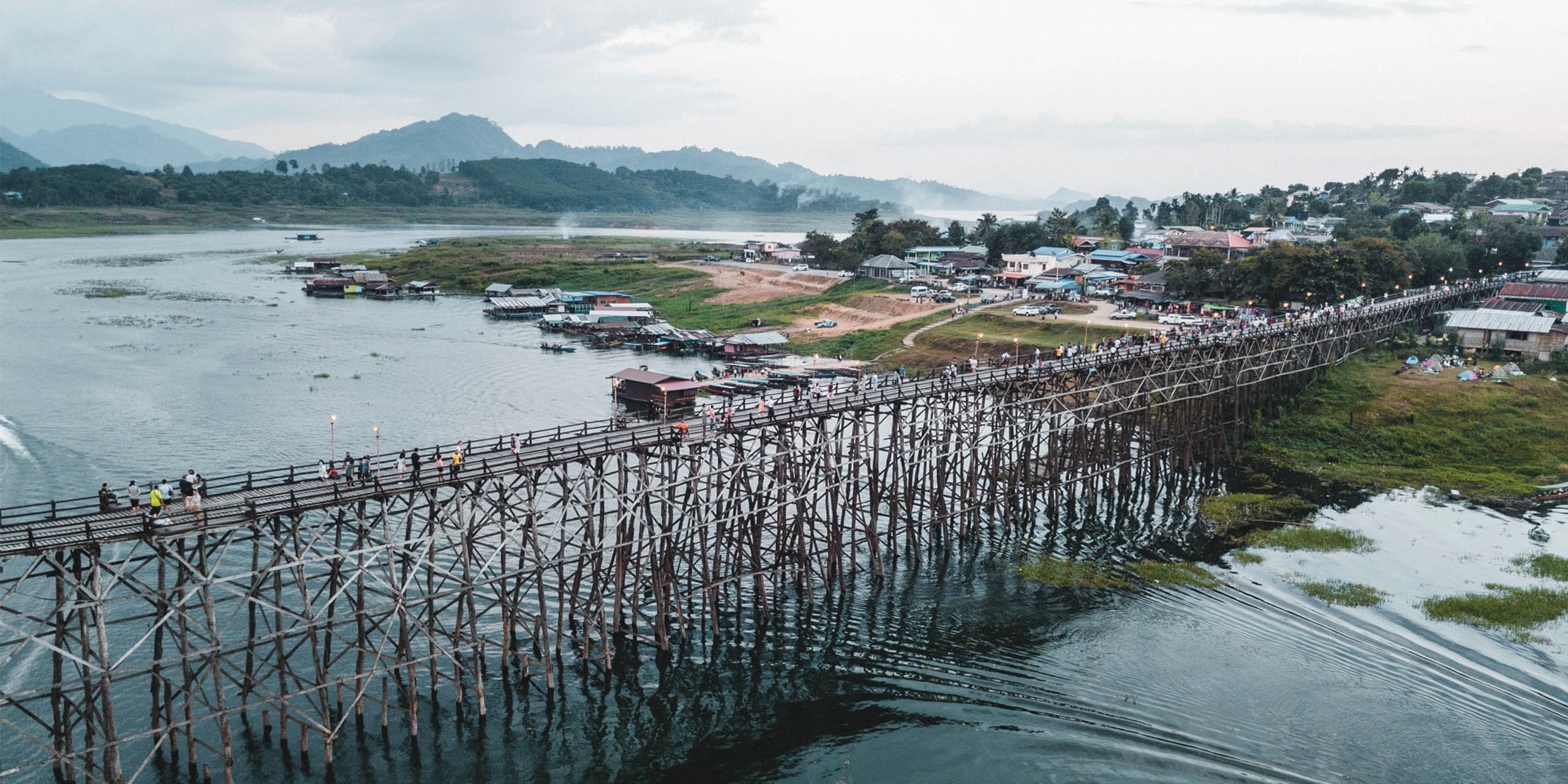
Isolated far from the country’s main tourist centers, Sangkhlaburi tends not to feature on lists of Thailand’s greatest hits. In my view that’s a pity. The idyllic district in the far west of Kanchanaburi Province just 24-kilometers from the border with Myanmar warrants more footfall from visitors. And its friendly, welcoming people certainly deserve more tourist dollars for their businesses.
There’s another school of thought that says that this forgotten corner of the Kingdom is fine as it is. Pilgrims looking for the “real Thailand” stand a good chance of tracking down the elusive beast amidst Sangkhlaburi’s jungle-clad hills, its charismatic local markets, peaceful wats, and its charismatic blend of ethnic groups. Even the 7-hour road trip here is an adventure. The route from Bangkok to Kanchanaburi is relatively mundane. But from there, the route develops into a driver’s fantasy of switchback turns, and outstanding views.
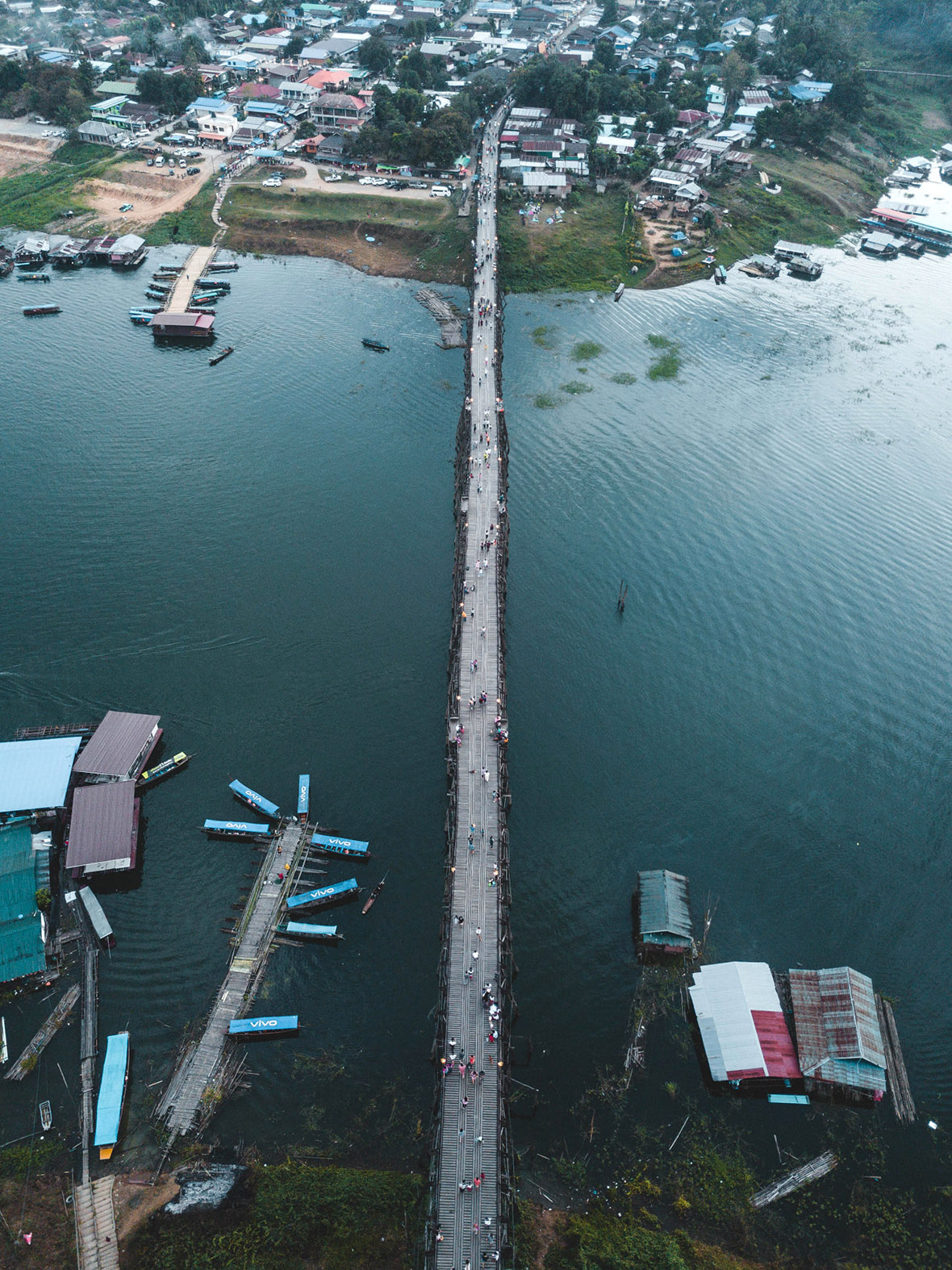
The juxtaposition of cultures informs the main drawcard of the destination: Saphan Mon. This 400m bridge links the district’s main town also Sangkhlaburi) with Wang Kha (known as Monside). As you might ascertain from the name, the latter village is home to a long-established Mon community. The village was founded by Luang Phor Uttama in 1949 after he fled Burma with 60 other Mon families.
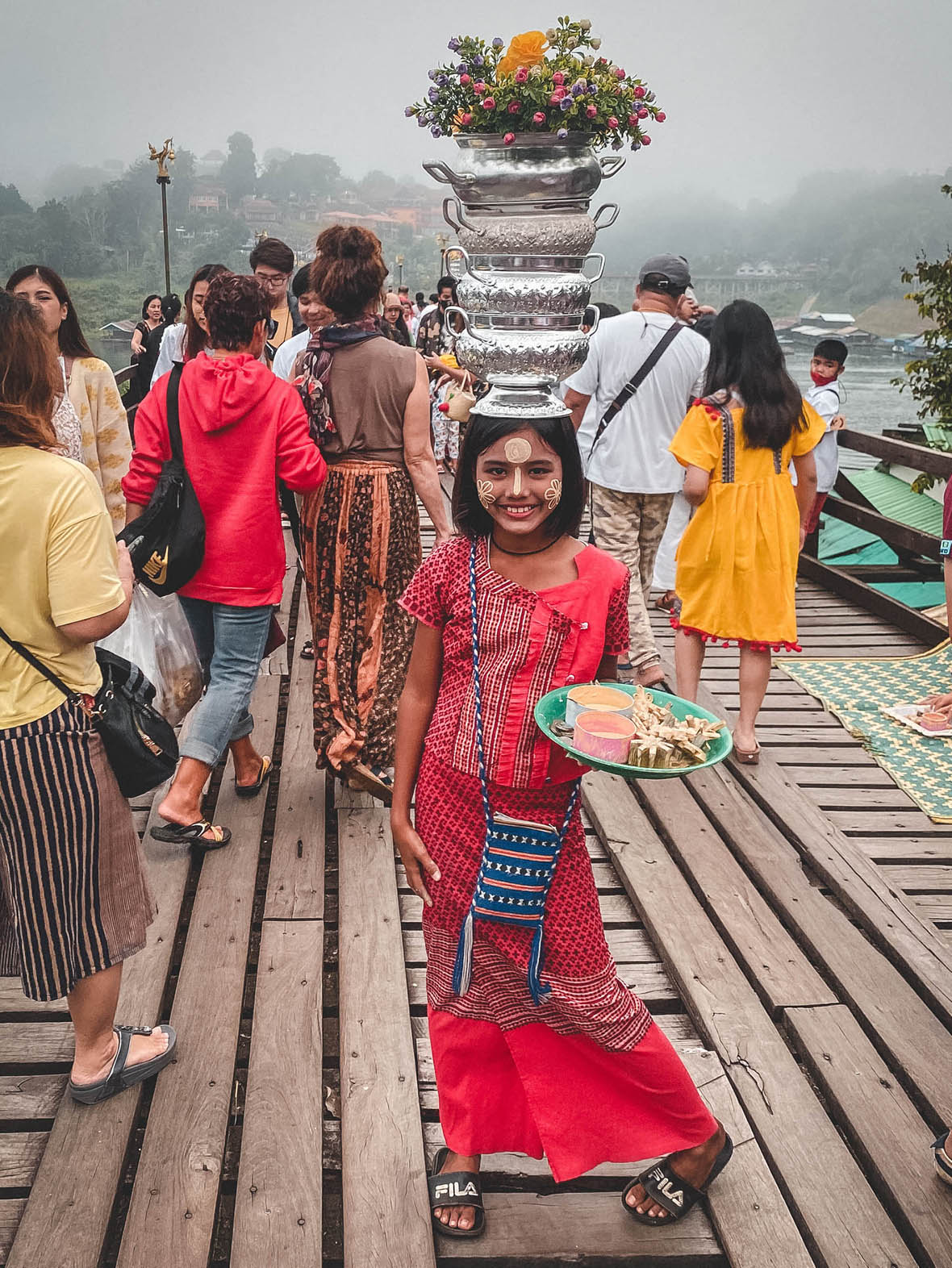
A stroll around Wang Kha offers a compelling insight into Mon culture. There are some great local food shops here serving authentic Mon cuisine. Most visitors, though, will linger longest at the wooden bridge, made from teak, which is the second-longest hand-made bridge in the world (after U Bein Bridge in Mandalay) and is Sangkhlaburi’s signature site. It’s especially entrancing around sunrise and sunset when locals come to hang out and luxuriate in the mellow light. It’s a great time to interact with the local Mon, a friendly and accommodating bunch who were happy to pose for pictures. It’s also an excellent juncture to snap images of the bridge and the lake. I sent my drone up and over the bridge in the early morning bridge and got inspiring results.
There’s much more to Sangkhlaburi than just Saphan Mon, of course. The other must-do activity in the area is to take a boat trip on Vajiralongkorn Lake, one of Thailand’s many impressive, dammed reservoirs. Sunrise over the misty, mirror-like water is pure magic. Out on the water itself, you can commandeer a boat for a better look at Wat Saam Prasob, a Mon temple that was among the structures submerged when the dam was constructed.
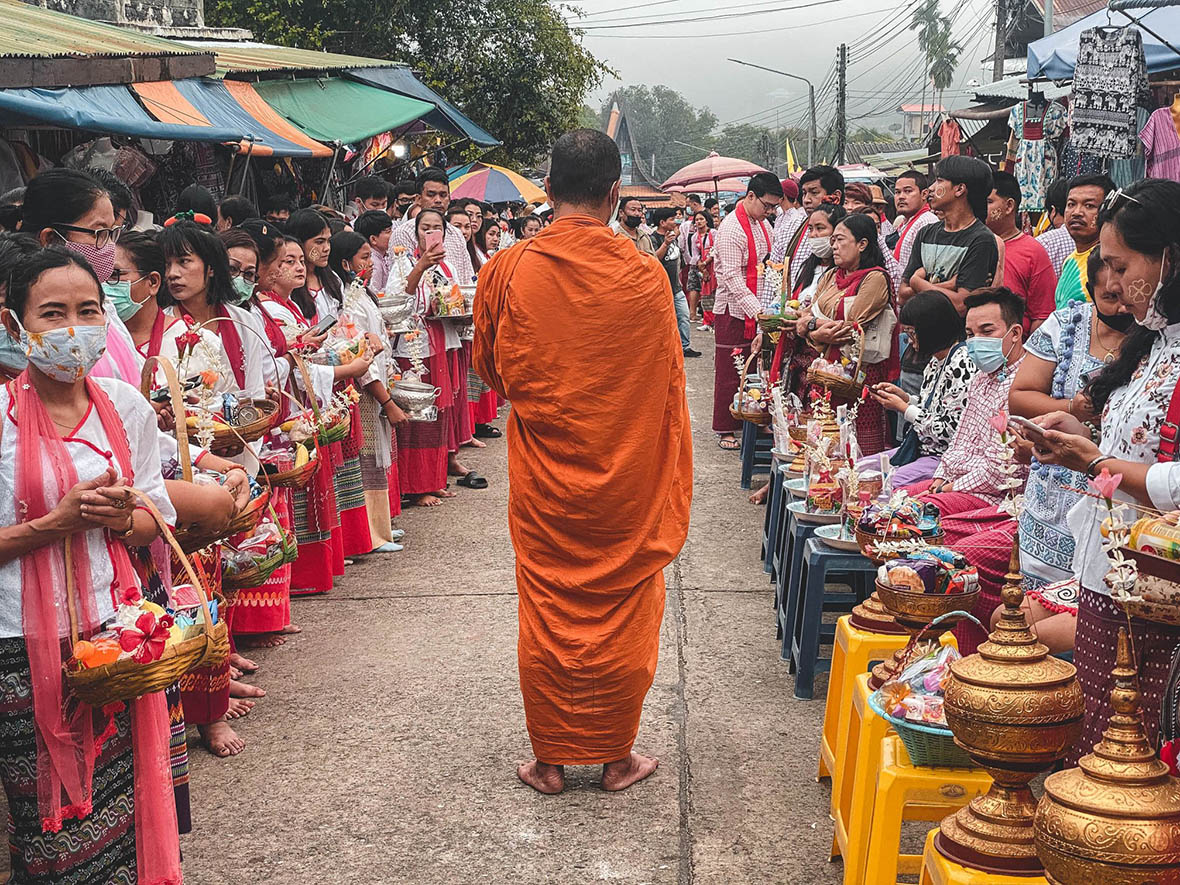
The area abounds with transcendent sights. Another highlight is the daily alms-giving ritual performed by members of the Mon community in Wang Kha. It’s a rite of spiritual passage that rivals the similar morning exchange in Luang Prabang in Laos.
The outlying area is among the most picturesque in all of Thailand. Visitors can explore tiny Mon and Karen villages, take in caves and waterfalls, and get wild in the vast Thung Yai Naresuan wildlife reserve and Khao Laen National Park.
The district is gaining fame among Thai tourists, many of whom come to try out Mon traditional dress for size and selfies. But otherwise, it remains blissfully untouched. The wild wild west of Thailand is a place that is worth striking out for.

